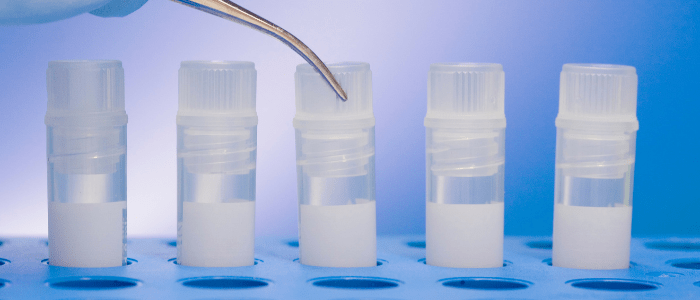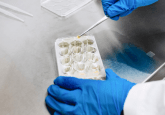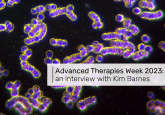Top 5 grants in regenerative medicine: October 2021

This month’s top grants in regenerative medicine, sourced from Dimensions, includes projects on: creating multi-scale constructs with jammed regenerative pockets for bone engineering, engineering an enhanced vesicle system for coordinated fracture repair, creating RNA nanoparticles for cardiac regeneration, engineering kidney organoids to study the relationship between tissue mechanics and metabolism, and the role of the immune receptor CD300f in spinal cord injury and metabolic reprogramming.
Check out this month’s top grants in regenerative medicine:
- Multi-scale constructs with jammed regenerative pockets for bone engineering
- Engineering an enhanced vesicle system for coordinated fracture repair
- Creating RNA nanoparticles for cardiac regeneration
- Engineering kidney organoids to study the relationship between tissue mechanics and metabolism
- The role of the immune receptor CD300f in spinal cord injury and metabolic reprogramming
Multi-scale constructs with jammed regenerative pockets for bone engineering
The overall goal of this project is to utilize engineered bone tissue as an alternative to the traditional use of bone grafts. The project aims to create unique toolboxes combining biostructure biomaterials based on human proteins obtained from the amniotic membrane (AM) and cells from the umbilical/blood cord for the advances of engineering 3D devices that enable the adjustments of the processes that lead to vascularized new bone tissue formation with minimum processing of cells.
Jammed liquified pockets will be assembled into a final desired implantable device, bound by the developed hydrogels, using non-conventional 3D bioprinting processing methodologies or by physical fixation in bioinspired, periosteum-like, regenerative membranes. The investigators hope that this research could ultimately lead to advanced techniques being employed to characterize the new tissue developed in hybrid devices, from the ultrastructure of the mineral or organic component.
Funding amount: US$3.1M
Funding period: 1 November 2021–31 October 2026
Funder: European Research Council
Research organizations: University of Aveiro (Portugal)
Engineering an enhanced vesicle system for coordinated fracture repair
Skeletal injuries such as bone fractures and lower back pain are currently extremely common amongst the elderly. At present they are a worldwide medical and socioeconomic burden, costing more than £1.7 billion per annum to the UK economy. The project aims to create a system to engineer standard clinical approaches to apply bone tissue grafted from one site to another in the same patient, from another patient, or synthetic bone graft substitutes.
The aim of this project is to create a platform to exploit the properties of extracellular vesicles to drive key regenerative responses for healthy bone formation, such as the recruitment of local progenitor cells and the formation of a natural mineral template to drive new tissue formation.
Funding amount: US$440,000
Funding period: 3 October 2021– 3 December 2023
Funder: Engineering and Physical Sciences Research Council (EPSRC)
Research organization: University of Glasgow (UK), University of Nottingham (UK), Loughborough University (UK)
Creating RNA nanoparticles for cardiac regeneration
This project aims to formulate chemically synthetized miRNA into a lipid nanoparticle (LNP199) that is fully biocompatible. The goal is to protect the miRNA from degradation and to promote its cardiac intracellular delivery. By experiments in large animals, the project will define the optimal route for LNP199 delivery by comparing three different routes of administration to the heart, any of which can be adopted for application according to standard clinical procedures.
Delivery of LNP199 in pigs after ischemia-reperfusion followed by cardiac MRI monitoring over time could potentially provide information on the efficacy of this treatment in a clinically applicable scenario and highlight possible side effects.
Funding amount: US$184,000
Funding period: 1 October 2021–31 March 2023
Funder: European Research Council (ERC)
Research organization: Sant’Anna School of Advanced Studies (Italy), King’s College London, (UK)
Engineering kidney organoids to study the relationship between tissue mechanics and metabolism
For this project, the research team proposes conceptual and technical advances to mechanistically link how the presentation of controlled physical and metabolic constrains during organoid generation are integrated and resolved through gene expression regulation and epigenetics.
The project will combine micropatterning techniques, hPSCs-genome engineering, metabolomics, biomaterials design and microfluidics. The identification of the molecular mechanisms connecting how metabolic and mechanical cues modulate cell fate and function will define minimal design principles for the proper control of cell-cell and cell-matrix interplay, and cell organization for organoid generation.
This knowledge will be implemented through three interconnected objectives to understand and model early steps of kidney morphogenesis and congenital anomalies of the kidney and the urinary tract, which account for 50% of the etiology of chronic kidney disease in children worldwide.
Funding amount: US$2.4M
Funding period: 1 October 2021–30 September 2026
Funder: European Research Council (ERC)
Research organization: Institute for Bioengineering of Catalonia
The role of the immune receptor CD300f in spinal cord injury and metabolic reprogramming
The project aims to address the interplay between inflammation and metabolic reprogramming by evaluating the role of microglia/macrophage CD300f and their metabolic reprogramming after SCI.
The results generated aim to provide insights related to the mechanisms underlying SCI, and for the understanding of how the immune system and the metabolism interact in SCI. This could have important implications in a wide-ranging spectrum of neurological diseases, where inflammation contribute detrimentally to pathology.
Funding amount: US$212,000
Funding period: 1 October 2021– 30 September 2023
Funder: European Commission (EC)
Research organization: University of Barcelon (Spain)
Brought to you with support from:






